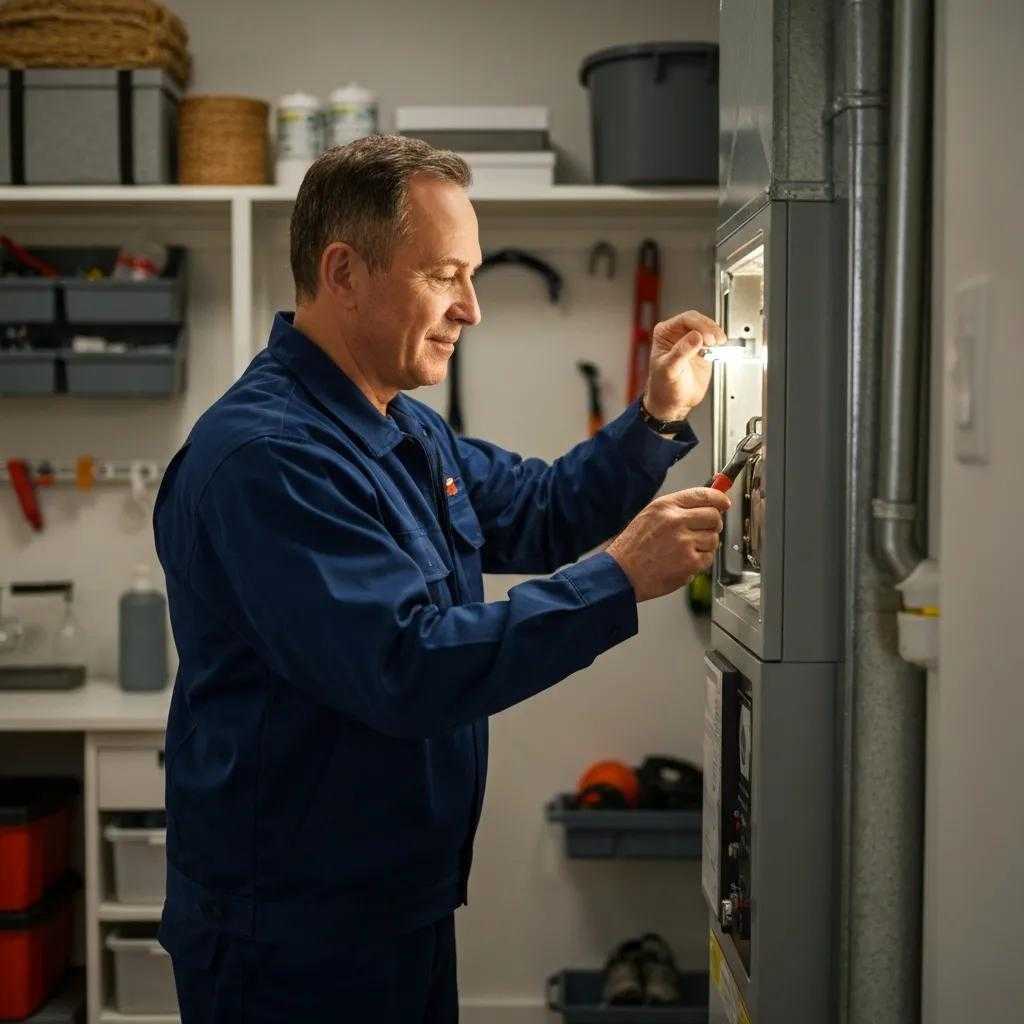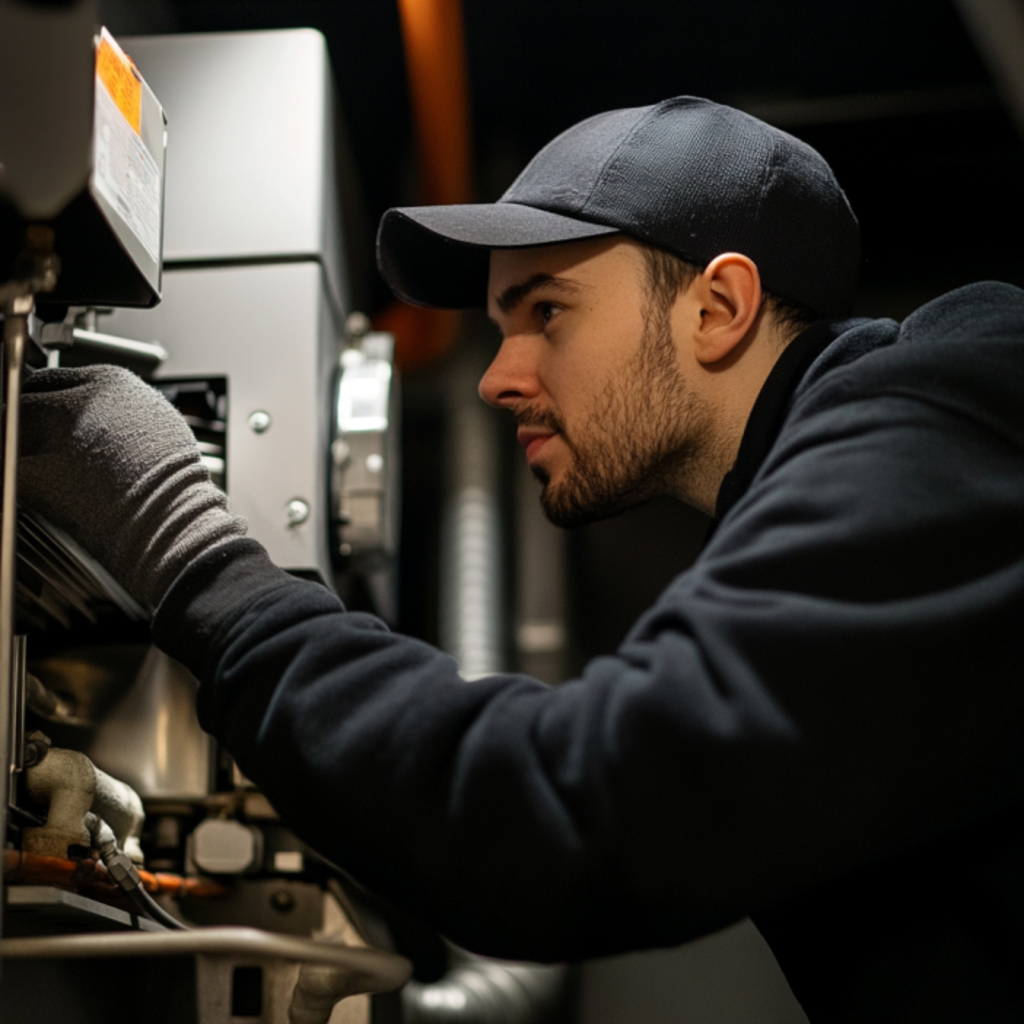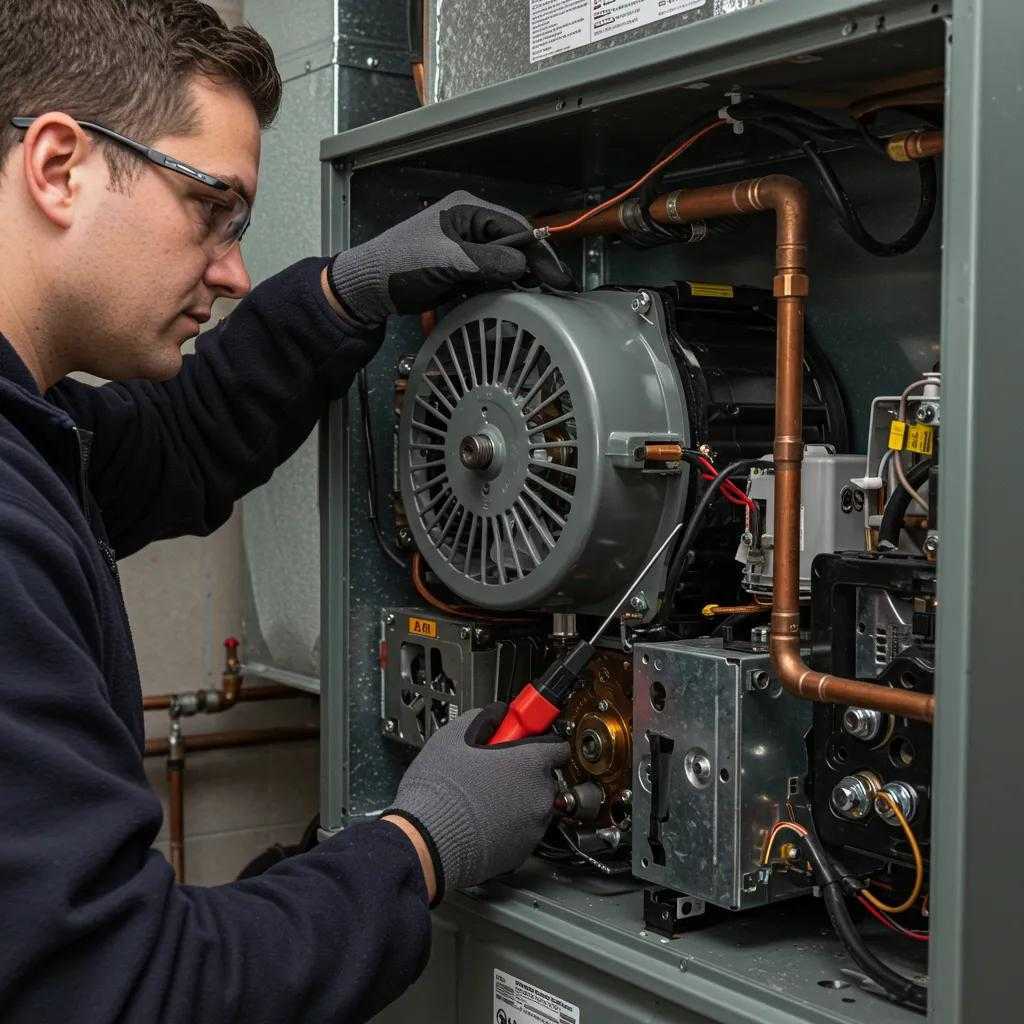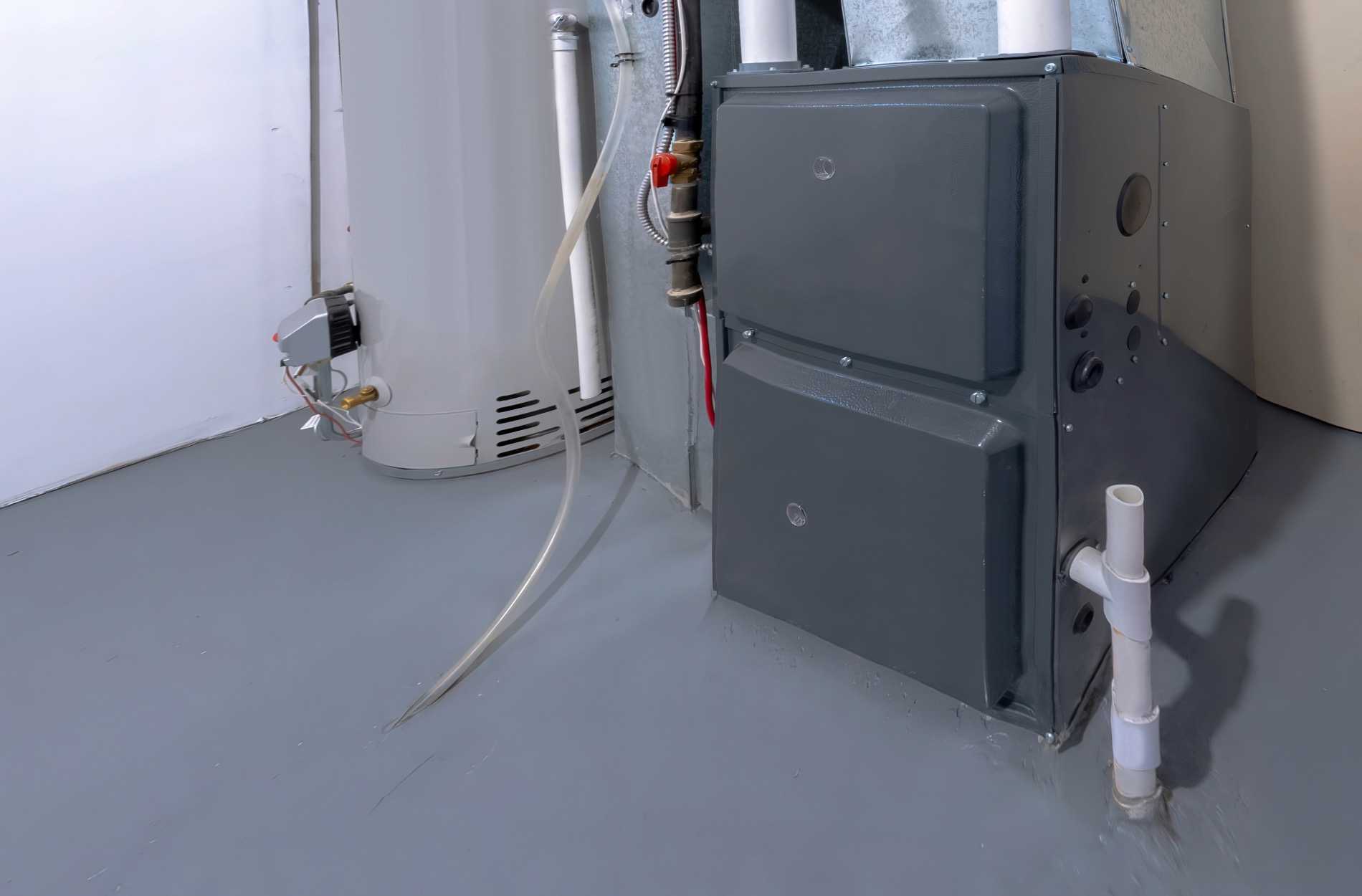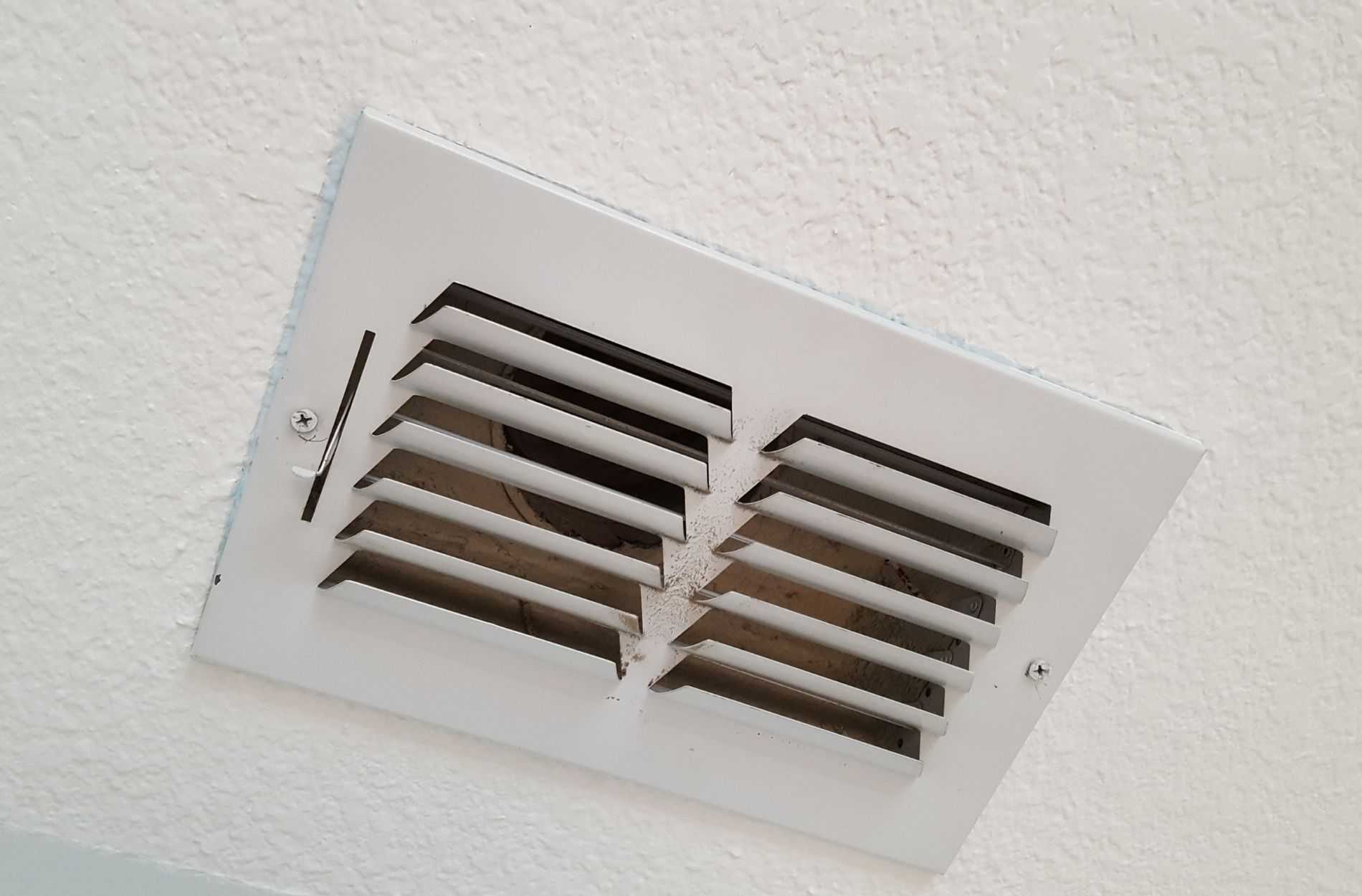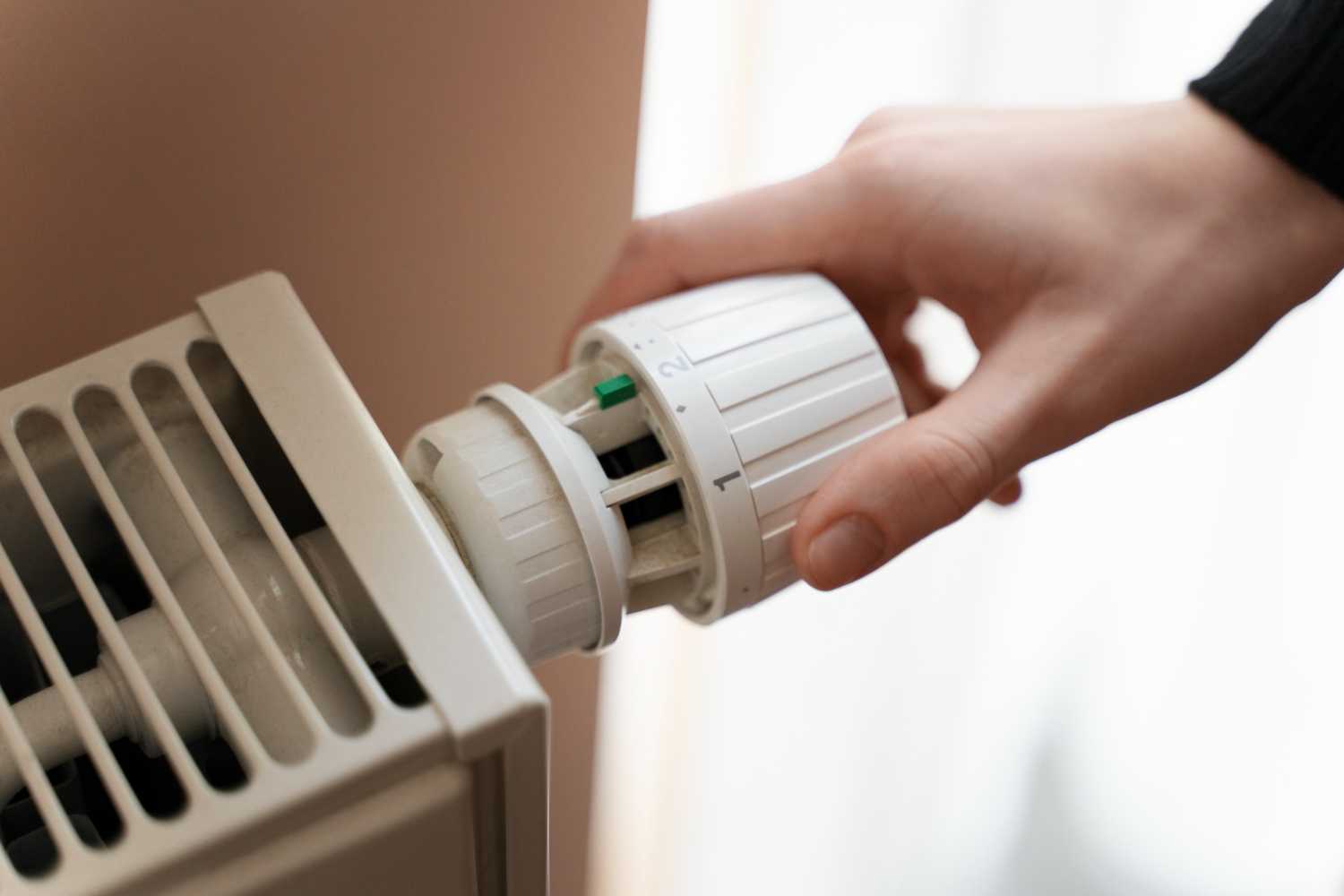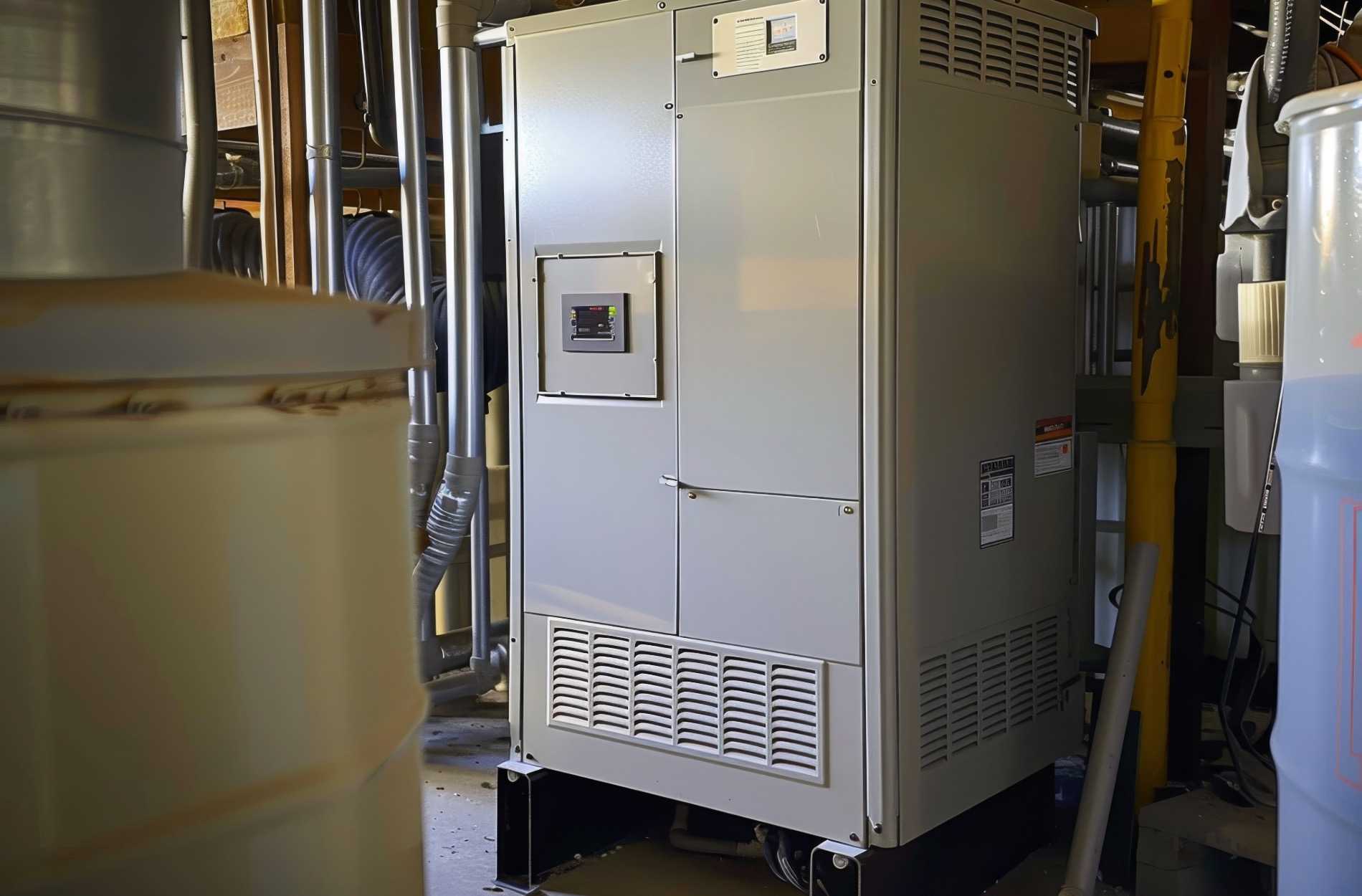Extend Your Furnace’s Life with Regular Care: Practical Tips and Professional Support
Routine furnace maintenance — scheduled inspections, tune-ups, and targeted preventive work — reduces wear, improves combustion efficiency, and lowers safety risks so your system heats longer and more reliably. Below we explain how regular heating maintenance and an annual tune-up work, which parts need attention, and which tasks are safe for homeowners versus those that require a trained HVAC technician. Many homeowners see higher energy bills, uneven warmth, and surprise breakdowns because small problems go unnoticed. A clear maintenance plan fixes those issues and protects system value. Read on for why maintenance matters, a component table for prioritizing care, a homeowner-versus-professional checklist, urgent warning signs, and practical tips to cut repair needs — all mixed with DIY steps, industry-standard reasons to call a pro, and how a local maintenance plan can give you priority service and documented tune-ups for peace of mind.
Why regular furnace maintenance matters for lifespan and efficiency
Regular maintenance is a planned routine of inspection, cleaning, calibration, and safety testing that keeps components healthy and energy use steady. Catching small issues — like restricted airflow, dirty burners, or loose electrical connections — reduces mechanical stress that shortens a furnace’s life and keeps combustion and controls tuned for peak efficiency. Regular care also often meets manufacturer and warranty requirements and lowers the chance of unsafe conditions such as carbon monoxide leaks. The concrete benefits include measurable energy savings, steadier comfort, and fewer emergency calls, so an annual tune-up isn’t just convenient — it’s a preventive investment that pays off in safety, performance, and longer equipment life.
What an annual furnace tune-up delivers
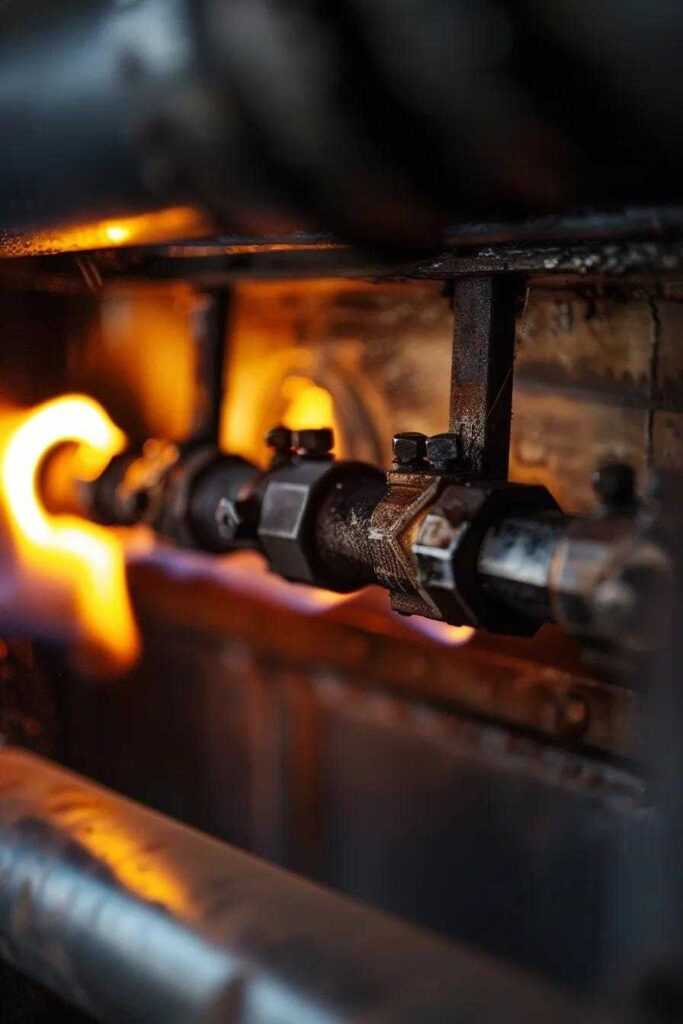
An annual tune-up is a focused service visit that includes cleaning, calibration, testing, and small repairs to restore performance and lower failure risk. Typical results are fewer mid-winter breakdowns, fewer repair visits overall, and better indoor air quality as filters and combustion areas are serviced. Efficiency gains vary — from a few percent up to double digits depending on prior neglect — and safety checks reduce combustion-related risks like elevated carbon monoxide. A documented tune-up also helps preserve warranty coverage and builds a service history that speeds diagnosis if issues return. In short, tune-ups give immediate performance improvements and long-term reliability by catching faults early.
How regular maintenance boosts efficiency and safety
Maintenance restores proper airflow, cleans burners and heat exchangers, and calibrates controls so the furnace runs with fewer cycles and less wasted fuel. Clean filters and clear ducts cut blower runtime and increase heat transfer, while combustion tuning optimizes the fuel-to-air mix and reduces harmful byproducts. Safety improves because trained technicians inspect the heat exchanger for cracks, check flame color and stability, and test for carbon monoxide — checks a homeowner can’t easily perform. Thermostat calibration and control checks also reduce short cycling, which limits component wear and helps equipment last longer. Together these steps link safety, efficiency, and extended service life.
Which furnace components need regular care?
A furnace is made of interdependent parts that each need specific attention to keep performance high and avoid premature failure. Key components include the air filter, blower motor, heat exchanger, burners/combustion assembly, thermostat and controls, belts and bearings, and the ductwork that moves heated air. Regular inspection and maintenance of these areas prevent airflow restriction, electrical stress, combustion problems, and structural damage — all common causes of shortened furnace life. The table below matches components to maintenance tasks and recommended timing so homeowners and pros can prioritize work.
Different parts require targeted maintenance to keep the system safe and efficient.
| Component | Maintenance Task | Frequency / Impact |
|---|---|---|
| Air filter | Replace or clean to preserve airflow | Every 1–12 months depending on filter type; high impact on efficiency |
| Blower motor & fan | Clean, lubricate, check belt/tension | Annually; reduces motor strain and prevents failure |
| Heat exchanger | Visual inspection and combustion test | Annually; critical safety check for cracks and CO risk |
| Burners & ignition | Clean and calibrate combustion | Annually; improves fuel efficiency and flame stability |
| Thermostat & controls | Calibrate and test sensors | Annually; reduces cycling and ensures accurate setpoints |
| Ductwork & vents | Inspect and seal leaks | Every 1–3 years or as needed; improves distribution and reduces load |
This component mapping highlights where small maintenance investments give the biggest returns for efficiency, safety, and lifespan.
How often should you replace furnace air filters — and why it matters
Filter replacement depends on filter type, household conditions, and how much the system runs. Basic 1″ fiberglass or standard pleated filters usually need changing every 1–3 months, while higher-capacity or electrostatic filters can last 6–12 months. Dirty filters restrict airflow, forcing the blower to run longer and reducing heat transfer, which raises fuel use and accelerates wear on the motor and heat exchanger. Homes with pets, smokers, or higher dust levels should check filters monthly and replace them more often to protect indoor air quality and system components. Regular filter checks are a high-leverage homeowner task that keeps efficiency up and repair risk down.
Thermostats and heat exchangers: why they’re critical
The thermostat controls cycling and setpoints, so a miscalibrated unit can cause short cycling or excessive runtime that stresses the blower and heat exchanger. The heat exchanger is the furnace’s safety-critical part that transfers combustion heat to your air while keeping combustion gases separate — cracks or corrosion here create serious carbon monoxide risks and must be inspected by a professional. Upgrading to a smart thermostat can reduce unnecessary runtime and smooth schedules, while heat exchanger checks need combustion analysis and trained visual inspection. Paying attention to these parts balances comfort, efficiency, and safety across the system’s life.
A practical furnace maintenance checklist for homeowners and professionals
A good checklist separates homeowner-safe tasks from professional services so you can act safely while leaving critical inspections to qualified technicians. Homeowners can handle routine checks and filter changes; professionals should perform combustion testing, heat exchanger inspection, electrical diagnostics, and sealed-system work. The checklist below is arranged for practical use and can guide an annual tune-up or a homeowner routine. After the checklist we explain the value of a maintenance plan and how priority scheduling and member discounts reduce downtime and repair costs.
Homeowners and technicians share responsibility based on safety and technical complexity.
| Task | DIY Task / Professional Task | Benefit / Safety Note |
|---|---|---|
| Filter change | DIY | Improves airflow and indoor air quality; low risk when done correctly |
| Visual vent & flame check | DIY | Finds obvious blockages or abnormal flame color; stop and call a pro if unsure |
| Thermostat battery/calibration | DIY | Ensures accurate control and reduces short cycling |
| Combustion analysis | Professional | Verifies safe combustion and CO levels; required for heat exchanger checks |
| Electrical connections & controls | Professional | Prevents shorts and component failure; trained inspection recommended |
| Blower cleaning & lubrication | Professional | Reduces motor wear and improves airflow efficiency |
This comparison makes it easy to see which tasks are safe for homeowners and which need professional tools and certification.
DIY furnace tasks homeowners can safely do
Homeowners can handle a number of useful tasks if they follow basic safety steps: replace or clean filters, vacuum around vents and the furnace exterior, change thermostat batteries, and keep vents and registers clear. Always turn off power to the furnace before changing filters or clearing debris and follow the manufacturer’s instructions. Visual inspections for soot, odd flame color, or leaks help with early detection, but any sign of corrosion, cracked parts, or persistent smells should prompt a professional call. These DIY steps preserve airflow, lower wear, and make technician visits more effective.
What a professional furnace tune-up usually includes
A professional annual tune-up commonly includes combustion analysis, heat exchanger inspection, burner cleaning and calibration, electrical connection checks, blower and motor cleaning, thermostat verification, and a written service report with recommendations. Technicians use specialized tools to measure gas pressure, flue draft, and exhaust composition — checks a homeowner can’t do at home. Pros also test safety switches, inspect belts and bearings, and verify control board function to prevent mid-season failures. A documented tune-up creates a maintenance record that supports warranties and helps prioritize future repairs or replacements.
How to spot signs your furnace needs professional service
Spotting trouble early prevents costly failures. Common indicators include strange noises, unusual odors, visible corrosion, persistent yellow pilot lights, rising energy bills, and inconsistent heating between rooms. Each sign suggests possible causes — for example, banging may mean delayed ignition or thermal expansion, while grinding often points to motor or bearing issues — and knowing the likely cause helps you decide whether to book a routine visit or an urgent repair. Avoid attempts to fix combustion or heat-exchanger problems yourself; instead turn off the system, ventilate the area if needed, and call a trained technician. Prompt service limits safety risk and prevents further damage.
- Below are common symptoms with short cause notes to help you triage the problem.
- Use this list to decide between shutting down the system immediately and scheduling an inspection.
- If you smell gas or a CO alarm sounds, treat the situation as an emergency and follow safety steps.
- Unusual noises: Grinding, banging, or squealing often point to mechanical or ignition issues.
- Yellow or flickering pilot light: Can indicate incomplete combustion and higher CO risk.
- Rising energy bills without usage change: Often a sign of efficiency loss from restricted airflow or failing parts.
- Uneven heating across rooms: May reveal duct problems, blocked registers, or blower issues.
- Frequent cycling or short cycles: Usually caused by thermostat or airflow restrictions.
If you notice any of these signs, contact a professional for diagnostics; many local providers offer scheduled appointments and emergency repairs to address safety and reliability quickly.
What noises and pilot light changes commonly mean
Noises and pilot behavior give early warning. A steady blue flame is normal; a yellow or flickering flame can mean incomplete combustion or clogged burners that need a technician. Banging or popping at startup often comes from delayed ignition or thermal stress in the heat exchanger, while grinding or squealing usually point to worn blower bearings or motor problems that require professional attention. If you see soot, smell gas, or hear an alarm, turn off the furnace, ventilate the area, and call a technician. These signs should prompt combustion testing, burner cleaning, and mechanical repairs to restore safe, quiet operation.
How higher energy bills and uneven heating indicate trouble
Higher bills and spotty heating typically show reduced system efficiency from dirty filters, clogged burners, failing blower motors, or leaking ducts that increase runtime and fuel use. For example, a dirty filter restricts airflow, forcing the furnace to run longer and increasing wear and costs. Uneven heat can also come from duct imbalances, blocked registers, or weak blower output — issues a technician can diagnose with airflow measurements and a duct inspection. After diagnosis, the tech can recommend repairs, duct sealing, or airflow adjustments to restore efficiency and steady comfort.
How the Call Carter Club maintenance plan helps extend furnace life
The Call Carter Club bundles scheduled inspections, priority scheduling, and member discounts to cut repair frequency and downtime. The plan keeps furnaces on a documented preventive schedule so technicians find and fix small problems before they grow, preserving efficiency and lowering lifecycle cost. Priority service and discounts make it easier to book timely maintenance and reduce out-of-pocket costs when repairs are needed, while documented tune-ups support warranty compliance and peace of mind. For homeowners in the Bowling Green area and nearby communities, a maintenance agreement like the Call Carter Club ties preventive care to faster access and a clear service record.
The membership features below map to homeowner benefits and show how plan elements support furnace longevity.
| Feature | What It Does | Reader Benefit |
|---|---|---|
| Scheduled inspections | Regular annual or semi-annual tune-ups | Reduces the risk of major failures and extends equipment life |
| Priority service | Faster scheduling and emergency response | Less downtime during peak heat demand |
| Member discounts | Reduced rates on repairs and parts | Lowers total cost of ownership over time |
| Documented reports | Service records and recommendations | Supports warranty claims and resale value |
| 24/7 contact availability | Call or text access for urgent needs | Faster triage and emergency guidance |
This feature-benefit table shows how a structured maintenance agreement turns preventive care into clear homeowner value.
Why homeowners join the Call Carter Club
Call Carter Club members get scheduled inspections, priority appointments during peak season, discounts on repairs and parts, and written service reports that track furnace health. Those features lower the chance of emergency breakdowns by ensuring pros inspect combustion parts, blowers, and controls on a recurring schedule. Members also enjoy faster appointment windows and savings that make preventative care a smarter alternative to reactive repairs. For homeowners in Bowling Green, Glasgow, Russellville, and nearby towns, the plan combines local response with consistent preventive care to keep furnaces running longer.
How a maintenance agreement saves money and extends service life
A maintenance agreement helps your furnace last longer by scheduling timely cleaning, parts replacement, and calibration to prevent accelerated wear and sudden failures. Service experience shows preventive care cuts repair frequency and can improve operating efficiency. Regular maintenance reduces dirty burners and heat-exchanger issues that drive efficiency loss, and member discounts make timely repairs more affordable so small problems don’t become big ones. Documented tune-ups also help with warranty claims and boost resale confidence. In short, membership shifts spending from unpredictable emergency bills to predictable, lower-cost preventive care.
Expert tips to maximize furnace life and cut repair needs
Maximizing furnace life combines smart thermostat habits, regular filter care, duct maintenance, and seasonal scheduling so the system runs with less strain and faces fewer emergencies. Small operational changes — like modest thermostat setbacks and consistent filter checks — lower total runtime and thermal cycling, while sealing and insulating ducts reduces the load your furnace must meet. Pre-winter tune-ups and early-season service ensure burners, controls, and safety systems are ready before heavy demand starts, reducing winter breakdown risk. Pair these habits with a maintenance plan that offers priority service for the best results.
- Below are practical steps homeowners can take now to reduce furnace strain and extend equipment life.
- Do these consistently and combine them with annual professional tune-ups for best results.
- Each item targets a specific wear mechanism or efficiency loss in the system.
- Use thermostat setbacks: Lower setpoints slightly during sleep or absence to cut cycles and runtime.
- Change filters on schedule: Replace or clean filters based on type and household conditions to keep airflow steady.
- Seal and insulate ducts: Reduce leaks and heat loss that force the furnace to work harder.
- Keep vents unobstructed: Don’t let furniture or curtains block registers and disrupt airflow balance.
- Schedule pre-season maintenance: Book inspections in late summer or early fall to avoid peak-season delays.
Following these steps reduces runtime and component stress, which lowers repair frequency and helps your furnace last longer.
How thermostat settings and duct care reduce furnace strain
Good thermostat settings — modest setbacks and fewer manual adjustments — cut short cycling and excessive starts that wear motors and controls. Smart thermostats automate schedules and learn patterns to smooth demand while maintaining comfort. Ductwork care, including sealing leaks and insulating exposed runs, prevents conditioned air loss and reduces how hard the furnace must work. Together, optimized controls and targeted duct repairs lower runtime, reduce blower wear, and help the furnace reach and hold temperature with less strain and fewer repairs.
Why a pre-winter maintenance appointment matters
Scheduling service in late summer or early fall gets your furnace inspected and tuned before heavy seasonal use, lowering the odds of emergency repairs during cold snaps when technicians are in high demand. Pre-season tune-ups let techs handle combustion tuning, heat-exchanger checks, and airflow fixes while parts and appointment slots are more available. Early servicing also catches issues that are cheaper and easier to fix than last-minute emergency repairs. If you want readiness and lower risk during winter, plan maintenance before the season begins.
Carter Heating and Cooling supports homeowners in Bowling Green and the surrounding area with maintenance agreements like the Call Carter Club, priority scheduling, and 24/7 call or text access for urgent needs. If you’re ready to protect your furnace, consider schedule an inspection or joining a maintenance plan to get documented tune-ups, faster service during peak demand, and member discounts that make preventative care more affordable.
Frequently Asked Questions
What signs mean my furnace needs immediate professional service?
Look for unusual noises like grinding or banging, a yellow or flickering pilot light, rising energy bills without usage changes, or inconsistent heating room-to-room. These can indicate mechanical faults, combustion issues, or airflow problems. If you see any of these signs, contact a qualified heating repair technician quickly to prevent more damage and keep your home safe.
How can I improve my furnace’s energy efficiency at home?
You can boost efficiency with a few simple steps: replace or clean air filters regularly, seal leaks in ductwork, and make sure vents are unobstructed. A programmable or smart thermostat helps optimize schedules and reduce unnecessary runtime. Together these actions lower bills and keep your home more comfortable.
What should I do if I smell gas or detect carbon monoxide?
If you smell gas or a carbon monoxide alarm sounds, act immediately. Turn off the furnace if it’s safe to do so and evacuate everyone from the building. Don’t use electrical switches or devices that could spark. Once outside, call your gas company or emergency services. Carbon monoxide is a serious hazard, so make sure you have working detectors installed to alert you to danger.
How do I know if my furnace is operating efficiently?
Watch your energy bills for unexplained increases and check whether rooms stay at consistent temperatures — both are good clues. Regular maintenance, like annual tune-ups, helps keep efficiency high. If you hear strange noises, smell unusual odors, or notice frequent cycling, it’s time to call a professional for a full inspection.
What are the benefits of joining a furnace maintenance plan?
A maintenance plan offers scheduled inspections that prevent major breakdowns and extend your equipment’s life. Members often get priority service during peak seasons and discounts on parts and labor, making maintenance more affordable. A documented service history also helps with warranty claims and can support resale value.
How often should I schedule professional furnace inspections?
Plan for at least one professional inspection each year, ideally before heating season begins. Annual checks let technicians spot potential problems before they become costly repairs. Homes with heavy use or older systems may benefit from more frequent inspections to maintain performance and safety.
What DIY tasks can I safely perform to maintain my furnace?
You can safely replace or clean air filters, vacuum around the furnace and vents, check thermostat batteries, and look for blocked registers. However, if you notice corrosion, strange noises, or persistent odors, call a professional to avoid safety risks and ensure proper repairs.
Conclusion
Regular furnace maintenance is one of the best ways to extend the life and efficiency of your heating system while keeping your home safe and comfortable. By investing in routine inspections and tune-ups, you can avoid costly breakdowns and lower energy bills. A maintenance plan like the Call Carter Club adds convenience, priority service, and savings that make preventive care a smart choice. Protect your furnace — schedule an inspection today.

